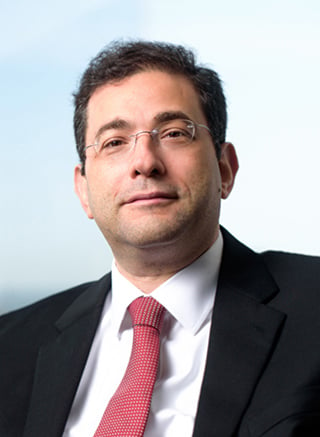The SEC and Disgorgement After Liu
Bloomberg Law
A recent Fifth Circuit ruling suggests a softening of the SEC’s obligation to return disgorgement awards directly to victims, says Elisha Kobre, a partner at Bradley Arant Boult Cummings LLP. The issue is relevant because the Dodd-Frank Act created a specific fund to hold monetary sanctions collected by the SEC, including disgorgement amounts not directly distributed to victims or used in other specified ways, he explains.
The U.S. Court of Appeals for the Fifth Circuit became the first circuit court to address a principal requirement recently imposed by the U.S. Supreme Court on the ability of the Securities and Exchange Commission to seek the remedy of disgorgement for violations of the federal securities laws.
In SEC v. Blackburn, the Fifth Circuit on Oct. 12 affirmed an order of disgorgement as being “awarded for victims” under the recent, impactful case of Liu v. SEC. The decision in Blackburn and other district court cases decided since Liu likely signify that Liu’s “awarded for victims” requirement is unlikely to present an obstacle to the SEC’s ability to obtain disgorgement in many run-of-the-mill securities fraud cases.
Liu’s ‘Awarded for Victims’ Requirement
Under the Securities Exchange Act of 1934, the SEC can seek civil penalties and “equitable relief ... that may be appropriate or necessary for the benefit of investors.” Liu held that, to fit within the traditional definition of equitable relief, an award of disgorgement of profits—one of the SEC’s principal form of equitable relief—must, among other things, be “awarded for victims.”
Critically, the court stated in that it is an “open question” whether the practice of depositing disgorgement funds with the U.S. Treasury would be permissible as benefiting investors where it is “infeasible” to distribute the collected funds to investors.
The issue is particularly relevant because the Dodd-Frank Wall Street Reform and Consumer Protection Act of 2010 created a specific fund to hold monetary sanctions collected by the SEC, including disgorgement amounts not directly distributed to victims or used in other specified ways.
The SEC has used this fund to pay increasingly large whistleblower awards. The amounts at stake are enormous. As reported in the SEC’s 2019 Division of Enforcement Annual Report, the SEC took in $3.248 billion in disgorgement awards in 2019, but payed out only about $1.2 billion to investors, leaving upwards of $2 billion in disgorgement collected in the hands of the Treasury.
The Fifth Circuit’s Decision in Blackburn
Against this backdrop, the Fifth Circuit’s decision in Blackburn was an easy case. Blackburn and his confederates were charged with failing to register securities in a penny-stock company they ran and for defrauding investors through a series of false representations about the company’s performance and its management.
In imposing disgorgement of profits, the court found that the SEC had “identified the victims and created a process for the return of disgorged funds.” The court contrasted the case with insider trading cases—where no identifiable victim exists—finding that the Blackburn defendants had harmed “identifiable investors.” It was therefore certainly “feasible”—indeed “it [was] the plan”—to return the funds to those harmed investors. The case therefore did not implicate the Treasury fund issue left open in Liu.
While the facts of Blackburn may have made that case an easy one—i.e., the SEC had already identified actual victims—the decision’s reasoning suggests a largely permissive approach to the “awarded for victims” requirement.
The court’s (a) focus on the feasibility of distributing funds to investors—rather than a strict requirement that victims be identified prior to an award for disgorgement and (b) contrast with insider trading, the prototypical case where identifiable victims altogether do not exist, both suggest a liberal “categorical” type approach to the awarded for victims requirement.
This approach would allow disgorgement whenever the case is one in which identifiable victims exist and could theoretically be identified, whether or not the victims have already been identified at the time judgment is entered and whether or not the funds actually go to the victims at the end of the day. Blackburn further noted that the distribution scheme in that case was not “the only way to satisfy Liu as other cases may present greater challenges for ensuring that disgorgement benefits victims.”
Consistent with this language, following Liu, district courts around the country have regularly granted the SEC disgorgement based upon the SEC’s stated intention to distribute funds to investors, regardless of whether any specific investors have been identified, and even ex ante permitting any funds not so distributed to go to the Treasury.
This less rigid approach to Liu’s “awarded for victims” requirement is in accord with the SEC’s own reading in its 2020 Division of Enforcement Annual Report, in which, rather than imposing a strict rule, Liu merely “emphasized the importance of returning disgorged funds to harmed investors.”
The key takeaway from Blackburn and other district court cases is that Liu’s “awarded for victims” requirement will likely not be strictly interpreted to require the SEC to identify specific victims prior to the entry of an order for disgorgement. Instead, courts will allow disgorgement wherever the identification of victims is “feasible” and will likely enter judgments that leave open the possibility that funds not otherwise returned to investors will be sent to the U.S. Treasury.
In early 2021, Congress enacted amendments that may have the effect of scaling back Liu’s impact, but until then, it is unlikely that Liu’s requirement that disgorgement be awarded to investors will have a significant impact.
Republished with permission. This article, "The SEC and Disgorgement After Liu," was published in Bloomberg Law on November 4, 2021.

